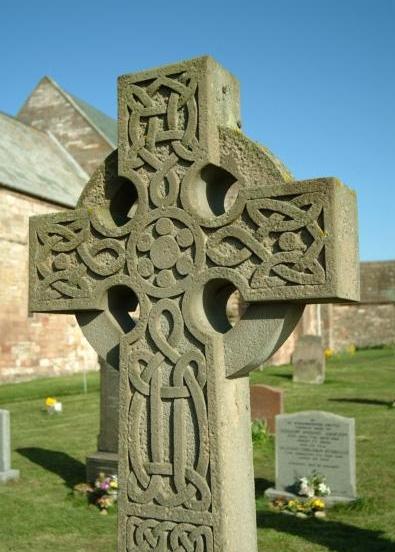Everyone knows about the culture of Greece, Rome, Egypt. These civilizations are an example of art and culture. But on the territory of Europe once there was a people whose skill and heritage are simply amazing. They were called Celts.

Time did not spare them: from the once powerful people, only memory remained in the form of complex ornaments, names on the map and crosses covered with ornaments in the fields of Ireland.
Celtic patterns, the meaning of which is not fully understood, attract the eye, fascinate, mesmerize. Looking at them, you will inevitably believe that these strange interweaving of lines have mystical power. As in the drawings of other peoples, their beliefs and worldview are reflected in the ornaments and weaving of the Celts.
If you look at the Celtic patterns, their significance will no longer seem such a huge secret. All lines have neither an end nor a beginning, as in the Celts' ideas they had neither an end nor a human life. In the world, everything is interconnected and passes into each other, the smaller is always part of something larger. The Celts believed that man is part of the World Tree, with which he will merge, having gone through many deaths, births and rebirths. When an individual chose a picture for a talisman, he also chose his fate, since there were ornaments that brought the owner good luck, health, happiness and love.
You can try to unravel the meaning of Celtic patterns by looking at the medallions and the few surviving pendants.

The lines twist, twist, intersect in space like a giant maze. This is exactly what the Celtic patterns hide in themselves. Their meaning here is transparent -
it is
a maze in which a person wanders before he comes to the realization of the truth, that is, before he gets into the center of the maze.
Another unusual Celtic symbol is a cross, but not a simple one, but with a circle. He personified the harmony of the four elements. It is noteworthy that at the end it expands (as a symbol
of a person’s ability to self-development, to go beyond).
The Celts believed that a person simultaneously lives both in the real and in the unreal world. Moreover, the symbols of the latter help to live in this world, are able to influence and change the course of events.
Another famous symbol is trixel, or shamrock. Initially, he designated three legs emanating from one center, which personified the harmony of Fire, Air and Water.
Much later, the ornament changed, becoming like three spirals that form a triangle in the center.
The Celts also depicted animals. Moreover, the rabbit had a dual meaning. It is a symbol of prosperity, love, prosperity, but also cunning, resourcefulness and lust. Like many nations, the Celtic snakes were considered sacred guardians of magical secrets and healing. Deer is a symbol of rebirth, the
Tree of Life, as horns replace each spring.
Interestingly, Celts have dragons in mythology. This is quite unusual, since this "beast" lives mainly in China and
Japan. Dragons are symbolically represented by Celtic patterns. The meaning of this symbol is protection, wisdom and the ability to bestow immortality.
Summing up all of the above, it is worth noting that the numerous surviving ornaments amaze with the beauty and complexity of execution. Celtic patterns and their significance will always attract people's attention.